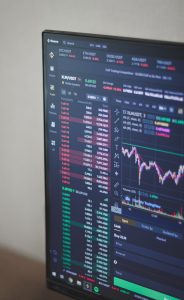Forex, or foreign exchange, is the buying and selling of currencies in order to make a profit. One of the key elements of successful Forex trading is being able to identify and predict market trends. But how do you tell if a trend will continue? In this article, we will explore some of the key indicators that can help traders determine whether a trend is likely to continue or not.
First, it is important to understand what we mean by a trend. In Forex trading, a trend refers to the direction in which a currency’s value is moving over a period of time. There are three types of trends: uptrend, downtrend, and sideways trend. An uptrend occurs when the price of a currency is consistently increasing over time, while a downtrend occurs when the price is consistently decreasing. A sideways trend, on the other hand, occurs when the price is moving within a relatively narrow range.
So, how can we tell if a trend is likely to continue? The answer lies in technical analysis, which is the study of past market data to identify patterns and predict future price movements. There are several key indicators that traders use to assess whether a trend is likely to continue or not.
One of the most commonly used indicators is moving averages. Moving averages are a type of trend-following indicator that smooth out the price data over a specified period of time. By plotting the moving average on a chart, traders can see whether the currency price is above or below the average, which can indicate whether the trend is bullish or bearish. If the price is consistently above the moving average, it is a bullish trend, while if it is consistently below, it is a bearish trend.
Another important indicator is the Relative Strength Index (RSI). The RSI is a momentum oscillator that measures the speed and change of price movements. It is used to identify overbought and oversold conditions. An RSI reading above 70 indicates that the currency is overbought and may be due for a correction, while a reading below 30 indicates that it is oversold and may be due for a bounce.
The Moving Average Convergence Divergence (MACD) is another popular indicator that can help traders identify trend reversals. The MACD is a trend-following momentum indicator that shows the relationship between two moving averages. A bullish signal is generated when the MACD line crosses above the signal line, while a bearish signal is generated when it crosses below.
Finally, traders can also use support and resistance levels to identify whether a trend is likely to continue. Support levels are price levels where demand is strong enough to prevent the price from falling further, while resistance levels are price levels where supply is strong enough to prevent the price from rising further. If a currency price breaks through a resistance level, it is a bullish signal, while if it breaks through a support level, it is a bearish signal.
In conclusion, there are several key indicators that traders can use to identify whether a trend is likely to continue or not. Moving averages, the Relative Strength Index, the Moving Average Convergence Divergence, and support and resistance levels can all provide valuable insights into market trends. By combining these indicators with sound risk management practices, traders can increase their chances of success in the Forex market.





